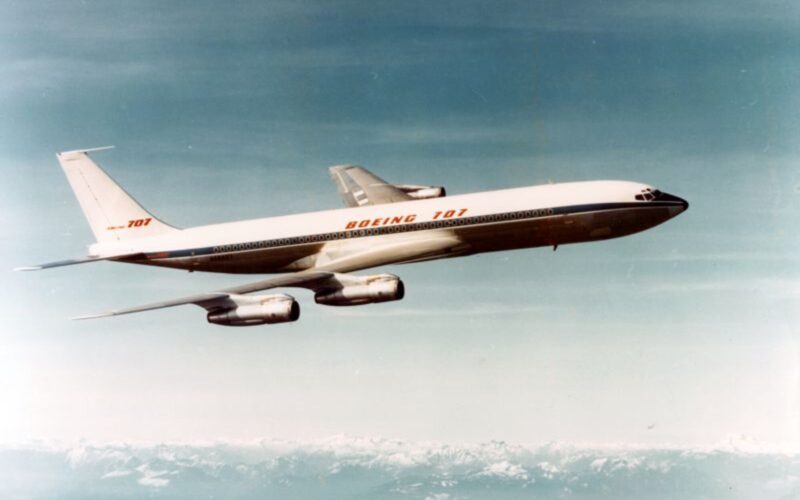If it ain’t Boeing – I ain’t going: the iconic Boeing 707 story
If it ain’t Boeing – I ain’t going is quite a bold statement. However, consider the context at the time. This was the beginning of the jet age – with the de Havilland Comet becoming a synonym for “mid-air explosion”, the Boeing 707 came at the right time.
McDonnell Douglas and SUD were lagging behind and introduced their DC-8 and Caravelle jet aircraft a year later than the 707. The Tupolev Tu-104 was behind the iron curtain. Because of this, it had no chance to impact anything culturally outside the Soviet sphere of influence.
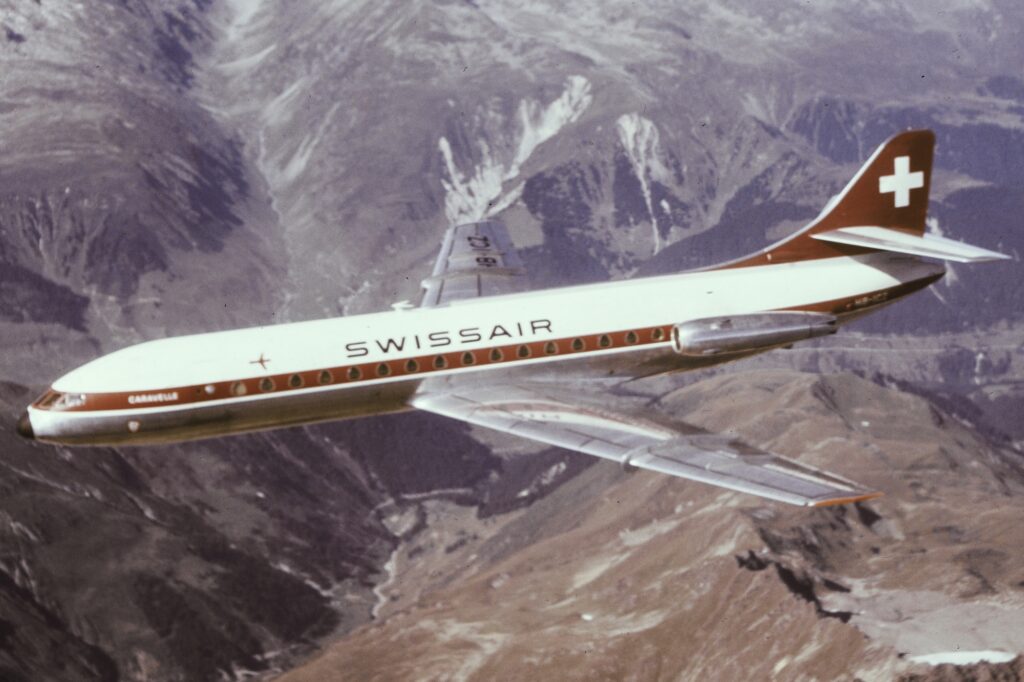
Thus, this allowed the Boeing 707 to become an icon and symbol of a new and revolutionary way of travel.
Culturally, October 17th, 1958 was the day that the jet age began in the minds of everyone. Or maybe restarted?
Anyhow, let’s roll back a bit and conceptualize what are the reasons why the 707 become such an icon.
A first Boeing with a jet engine
The first reason was that the Boeing 707 was a jetliner. At the time, the only commercial jets were flying behind the Iron Curtain. The de Havilland Comet was grounded after a series of crashes. That is why, when Boeing 707 introduced a reliable and safe jet-powered aircraft, it certainly did change the way we travel.
As I have previously already talked about the jet engines and the reasons why they will definitely replace piston jets in the Tupolev Tu-104 story, I won’t go too much into detail. To summarize, there were three reasons:
- Piston-powered engines were coming to their maximum as to how much power they can produce. To squeeze more, engineers made them more complex and that is the reason why maintenance costs shot up. Fuel consumption to engine power ratio was not ideal either;
- Passenger comfort. Piston engines are loud, they vibrate a lot (especially on a plane like the Constellation with 4 piston engines) and generally make passengers uncomfortable. With the price tag at the time for a ticket, they certainly did not provide a luxurious experience;
- The demand for trans-Atlantic flights has risen significantly. While Piston props could theoretically do trans-Atlantic flights, they usually had to stop to refuel. Their cruising speed was slow, so the flights took much longer than with jet engines.
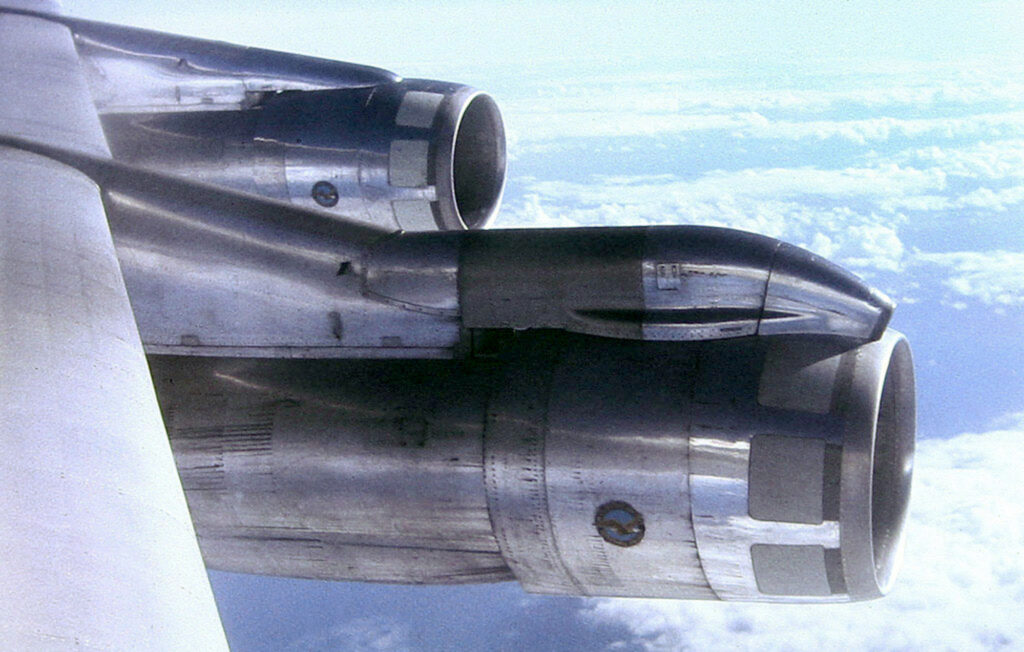
Laying down the foundations
One of the most important facts to know is that Boeing risked everything with the new 707. It was literally a make it or break it situation. The current Boeing company president at the time, William Allen, committed $16 million to develop 367-80. The money was everything that the company had earned after the war. So, if the 367 was a bust – the company would go bust as well.
Subsequently, the public nicknamed it the “Dash 80“. The 367 was an early Boeing 707 and Boeing KC-135 Stratotanker prototype.
Boeing’s strategy was simple – change the general perception that jet aircraft were unsafe. So, they developed and built the 367-80 to go on a tour around the United States (US) to prove to the public and CEOs of Airlines alike that a jet-powered aircraft can be safe while showcasing a flying example.
You got to hand it to Boeing – if the aircraft were to fail during these demonstration flights, the company was gone. However, they did a brilliant job of designing and building it and it encountered no issues after preliminary taxi and flight tests. After engineers completed the early designs in 1952, Boeing decision-makers approved it. Just two years later, in July of 1954, the 367-80 commenced its first flight.
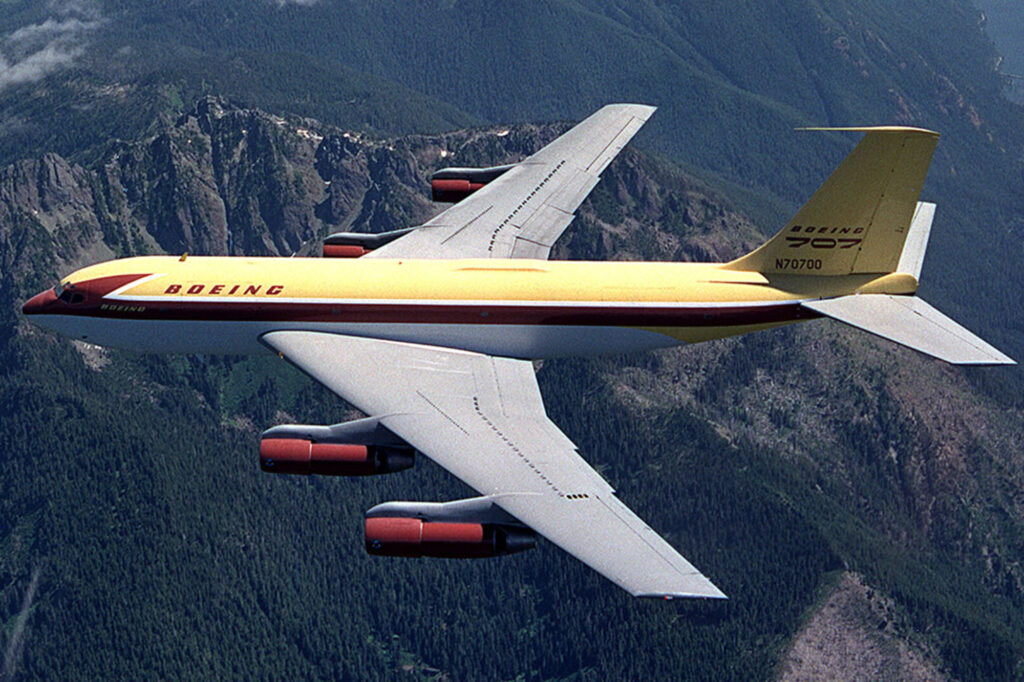
Boeing, like all others, had an advantage – they knew the structural problems of the de Havilland Comet. Nevertheless, you mustn’t forget that Boeing also built military aircraft. Like the Russians with the Tu-104, Boeing also used their experience from the B-47 Stratojet to build the new 367-80.
Do a barrel roll and make 707 a jetstar
August 6th, 1955 was a huge day for Boeing. In Seafair, an event held in Seattle, William Allen invited AIA and IATA members to show them the new jet.
This was crucial for the future success of the 707. If those 2 associations approve it, then there was nothing to stop the new Boeing jet from entering commercial service. As the company already secured orders for the KC 135 Stratotankers, it was crucial to do so for the 707 as well.
And one man made sure that the members of AIA and IATA would approve it. While doing a casual fly over, test pilot Alvin Johnston performed two barrel rolls. It might not have been the smartest decision to do so, the pilot later said he was just “selling airplanes”. While you cannot certainly say that the barrel roll sold the aircraft to customers, but it definitely made an impact.
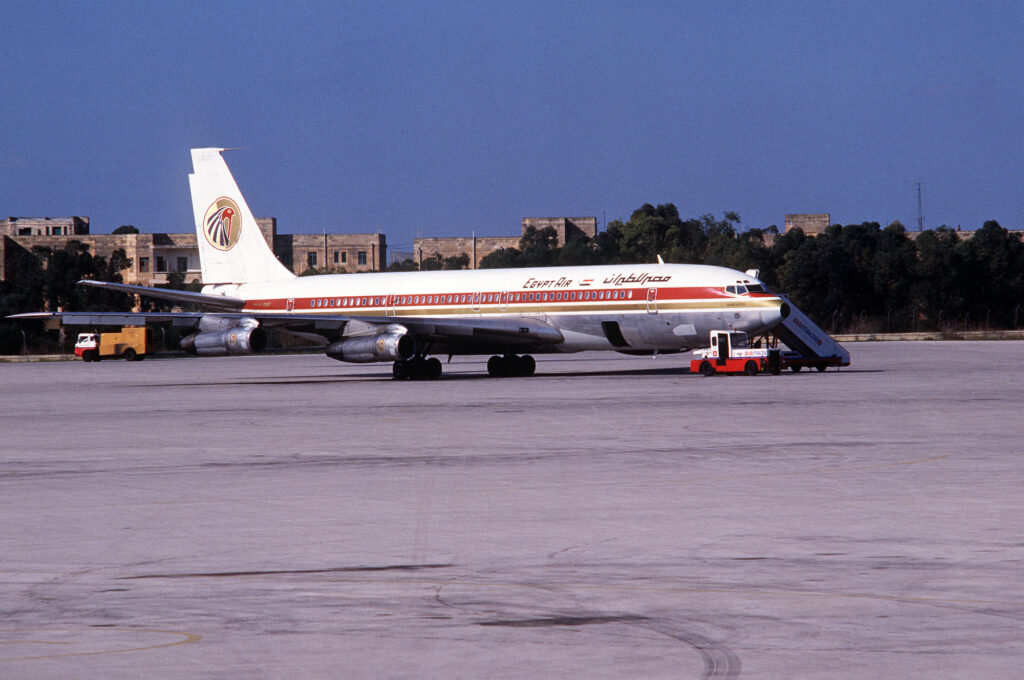
Cultural impact
While the Comet was the first commercial jet that started service, people wanted to forget about it. As quickly as possible. So when Boeing, a well-known manufacturer in the US, kicked the door open with it‘s 707, it instantly became a hit. Not only commercially for Boeing, but notably, it became an American cultural icon.
Even so much so, that Frank Sinatra bought his own 707. His “Come Fly With Me” album cover showed an aircraft, albeit a Lockheed Constellation. However, whenever someone heard the “Come Fly With Me” song, they imagined a Boeing 707 in front of their eyes. What is even crazier, that Jantzen, a swimwear company, used the Boeing 707 to advertise their newest swimwear collection in 1957.
Pan American Airways released a short-movie about the new jet and called it “The Wonderful Jet World of Pan-American.”
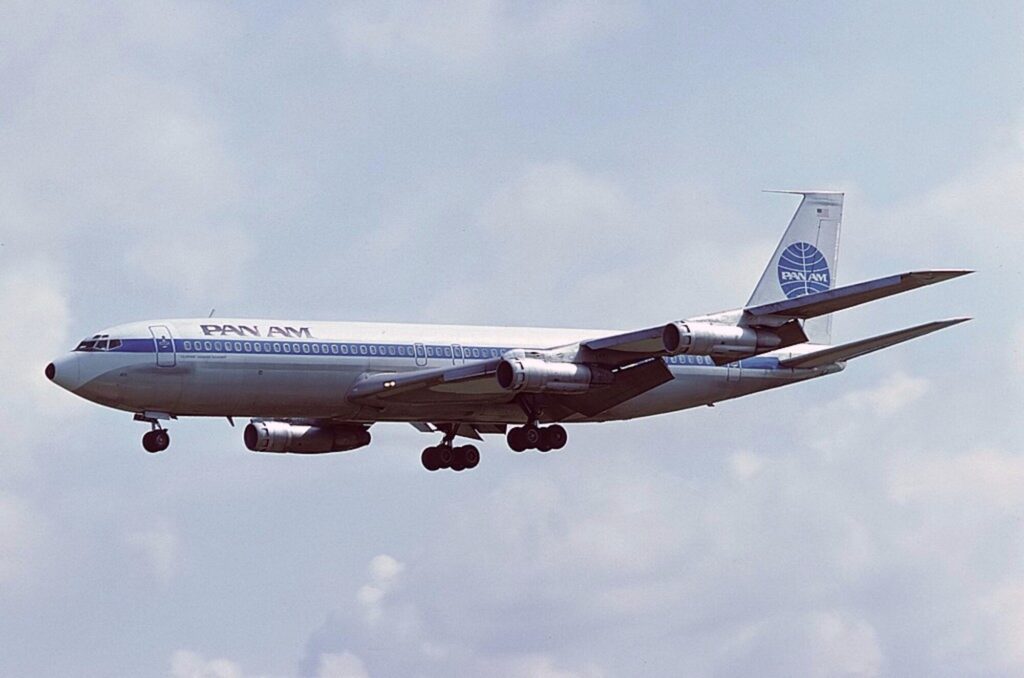
Boeing 707 – a commercial success
It became a cultural icon for a good reason – airlines also loved it. In total, Boeing built 856 Seven O’ Seven jets. Airlines bought 725, while Air Force units used the rest of the 707s.
Pan American Airways introduced the Boeing 707 on October 17th, 1958. Pan Am held a christening event, which the current president of the US, Dwight Eisenhower, attended. A special inaugural flight from Baltimore to Paris followed. Friends of Juan Trippe, the founder of Pan Am, occupied the seats onboard the flight. 9 days later, on October 26th, Pan Am started passenger operations from New York to Paris, with a fuel stop in Newfoundland.
The jet was not popular only inside the American market. Qantas started flying the 707 in 1959 and was the first international airline to do so. Many more followed Qantas and bought their first jets. El Al, BOAC, Singapore Airlines, Air France, Aer Lingus and Lufthansa were amongst the long list of 707 customers.
As I mentioned above, the Air Force used the 707s in various military specifications. Even today, 61 years after its launch, the Boeing 707 military units use it as a transport or a reconnaissance aircraft.
Regarding its safety record, aviation experts regard the 707 as a safe aircraft. Although accidents destroyed 173 Boeing 707 aircraft completely, pilots never complained about the difficulty of flying the jet. Nor it had any major structural issues like the de Havilland Comet did.
Too good for its own good
As public confidence grew, so did the passenger numbers for airlines operating the 707. Airlines could not keep up with the demand and Boeing had to come up with new variants to satisfy their customer needs. Qantas received a long-range model, while Braniff International got special 707s to fly in the high altitudes of South America.
As a result of trying to satisfy everyone’s needs, Boeing did not make a lot of profit off of the 707. Although it was commercially successful amongst airlines, the constant modifications made the program costly. However, the 707 laid the foundations for the further success of the company. As I said that airlines could not cope with the demand, the 707 eventually developed into the Queen of the Skies. So, while indirectly, the 707 still brought a profit to Boeing when the aircraft convinced airlines that Boeing built great jets.
And the Boeing 707 was good. In fact so good, that John Travolta even bought one. Qantas previously used the airline for regular service, when John Travolta purchased it. He then donated it to Historical Aircraft Restoration Society in Australia.
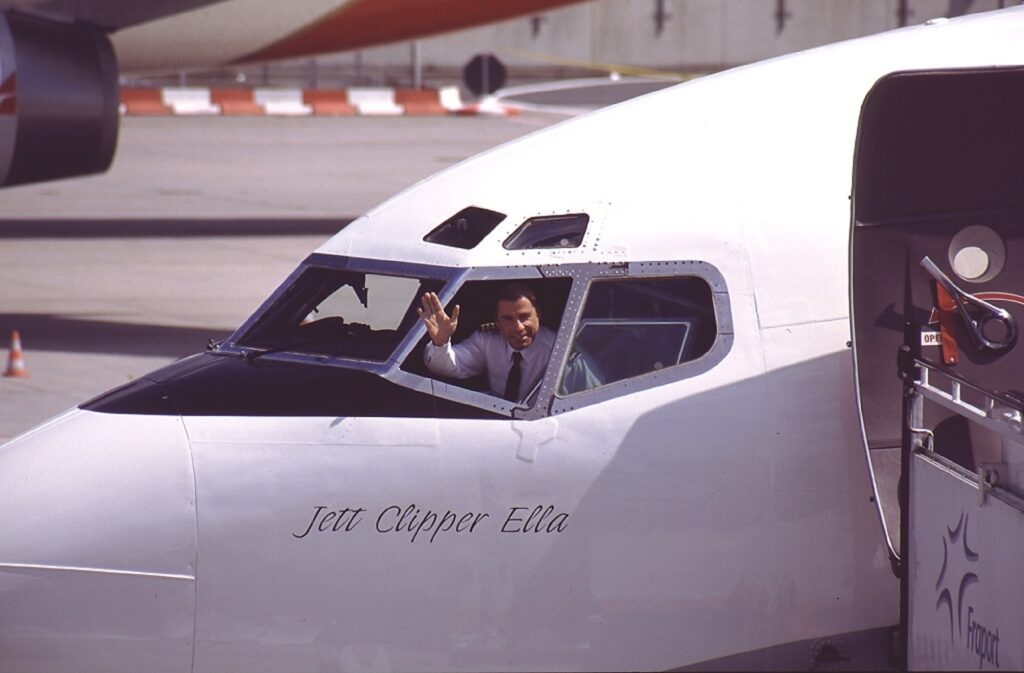
Furthermore, numerous countries still use the 707s in their Air Force, while the last commercial 707 crashed just two weeks ago.
To sum up, what the 707 did for aviation would be difficult and would require me a lot of additional words. But in an effort to keep it as short as possible, I will say this – the 707 was a huge risk that paid off for Boeing. And not only it did push the company forward, but it also pushed every other aircraft manufacturer forward to innovate, strive for greatness and be daring. The Boeing 707 brought revived the dream of jet aviation.

